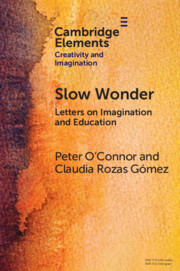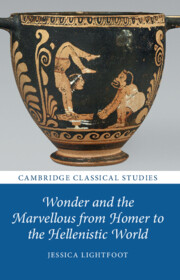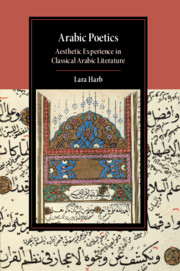23 results
Chapter 10 - The Ethical Dimension of the Tractatus
-
-
- Book:
- Wittgenstein's <I>Tractatus Logico-Philosophicus</I>
- Published online:
- 07 March 2024
- Print publication:
- 14 March 2024, pp 187-202
-
- Chapter
- Export citation
Embracing the mystery: David Hume's playful religion of wonder
-
- Journal:
- Religious Studies , First View
- Published online by Cambridge University Press:
- 29 August 2023, pp. 1-13
-
- Article
- Export citation
33 - Climate Change and Democratic Education
- from Part Four - Challenges
-
-
- Book:
- The Cambridge Handbook of Democratic Education
- Published online:
- 20 April 2023
- Print publication:
- 27 April 2023, pp 574-593
-
- Chapter
- Export citation
Chapter 10 - Encountering Vision
-
-
- Book:
- Literary Theory and Criticism in the Later Middle Ages
- Published online:
- 20 April 2023
- Print publication:
- 20 April 2023, pp 206-219
-
- Chapter
- Export citation

Slow Wonder
- Letters on Imagination and Education
-
- Published online:
- 23 September 2022
- Print publication:
- 27 October 2022
-
- Element
- Export citation
14 - The Sublime and Wonder
- from Part III - Engagements
-
-
- Book:
- The Cambridge Companion to Christianity and the Environment
- Published online:
- 21 July 2022
- Print publication:
- 04 August 2022, pp 217-230
-
- Chapter
- Export citation
8 - The City of God XIX–XXII
-
- Book:
- Pride, Politics, and Humility in Augustine’s <i>City of God</i>
- Published online:
- 12 June 2022
- Print publication:
- 23 June 2022, pp 201-235
-
- Chapter
- Export citation
Chapter 4 - Pilgrim
-
- Book:
- South Asian Writers, Latin American Literature, and the Rise of Global English
- Published online:
- 17 February 2022
- Print publication:
- 24 February 2022, pp 113-143
-
- Chapter
- Export citation
12 - Travel Writing
- from Part II - Prose Genres
-
-
- Book:
- The Cambridge Companion to Prose
- Published online:
- 05 November 2021
- Print publication:
- 18 November 2021, pp 196-213
-
- Chapter
- Export citation
1 - Beginning with Thauma
-
- Book:
- Wonder and the Marvellous from Homer to the Hellenistic World
- Published online:
- 19 July 2021
- Print publication:
- 16 September 2021, pp 1-16
-
- Chapter
-
- You have access
- Open access
- HTML
- Export citation
4 - The Sound of Thauma: Music and the Marvellous
-
- Book:
- Wonder and the Marvellous from Homer to the Hellenistic World
- Published online:
- 19 July 2021
- Print publication:
- 16 September 2021, pp 80-106
-
- Chapter
-
- You have access
- Open access
- HTML
- Export citation

Wonder and the Marvellous from Homer to the Hellenistic World
-
- Published online:
- 19 July 2021
- Print publication:
- 16 September 2021
-
- Book
-
- You have access
- Open access
- Export citation
3 - Defying a Defining Witness: the Bronze Horseman and the Buildings (De Aedificiis) of Prokopios
-
- Book:
- The Bronze Horseman of Justinian in Constantinople
- Published online:
- 08 April 2021
- Print publication:
- 29 April 2021, pp 72-97
-
- Chapter
- Export citation
5 - The Play at the End of the World
-
-
- Book:
- The Cambridge Companion to Theatre and Science
- Published online:
- 20 January 2021
- Print publication:
- 03 December 2020, pp 70-84
-
- Chapter
- Export citation
12 - The Politics of Wonder
- from Part I - Historical Antecedents and Philosophical Debates
-
-
- Book:
- The Cambridge Handbook of the Capability Approach
- Published online:
- 11 November 2020
- Print publication:
- 19 November 2020, pp 227-244
-
- Chapter
- Export citation
Chapter 22 - Wonder
- from Part II - Emotions
-
-
- Book:
- Shakespeare and Emotion
- Published online:
- 01 October 2020
- Print publication:
- 22 October 2020, pp 317-329
-
- Chapter
- Export citation
6 - Imagination in Classical India: A Short Introduction
- from Part I - Theoretical Perspectives on the Imagination
-
-
- Book:
- The Cambridge Handbook of the Imagination
- Published online:
- 26 May 2020
- Print publication:
- 18 June 2020, pp 80-93
-
- Chapter
- Export citation
Introduction
-
- Book:
- Arabic Poetics
- Published online:
- 24 April 2020
- Print publication:
- 14 May 2020, pp 1-24
-
- Chapter
- Export citation

Arabic Poetics
- Aesthetic Experience in Classical Arabic Literature
-
- Published online:
- 24 April 2020
- Print publication:
- 14 May 2020
Archaeologies of risk and wonder
-
- Journal:
- Archaeological Dialogues / Volume 23 / Issue 2 / December 2016
- Published online by Cambridge University Press:
- 02 November 2016, pp. 138-145
-
- Article
- Export citation



